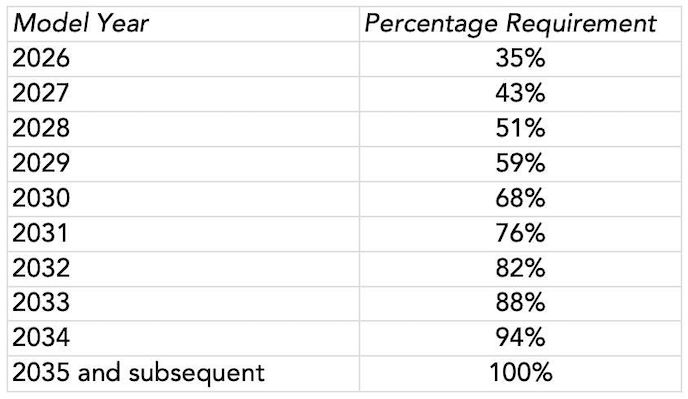California has passed a new rule banning the sale of new internal combustion engine (ICE) cars by 2035. Starting in 2026, 35% of new cars sold in the state by automakers must be zero emission vehicles (ZEV). This will increase every year until the 100% mark is reached by 2035.

California is the biggest car market in the US, with 25% of all new vehicles sold going to the golden state. 15 other states will adapt California’s rule. Together, they represent 40% of the entire US new car market. An automaker can not survive losing 40% of their market, so this ban is for all effect and purpose, is a US wide ban on ICE.
While the new rule is welcome by EV enthusiasts and hated on by ICE heads, it should be noted that the rule isn’t really needed to switch the auto industry to ZEVs. China, EU, UK, Canada and at least 3 dozen other countries all plan to ban ICE by 2030 to 2040. Just the fact that China is going to ban ICE by 2035 means the entire world is going ZEV in 2035. If you think losing access to the California new car market is bad, it’s nothing compare to losing access to the China car market! China is the world’s biggest car market and buys more EVs than the rest of the world combined.
I should also note that most automakers plan to go 100% ZEVs by or before 2035. Jaguar will be going all electric by 2025. Lotus said all their cars will 100% electric by end of next year. GM said they’ll be all electric by 2035.
If Gas Cars Are Banned, Can The Grid Handle Electric Cars?
A common argument by misinformed ICE heads is the electrical grid can’t handle everyone switching over to EVs. There are 230 million drivers in the US and if they all start driving electric cars, it would completely overwhelm the power grid, so they claim. Jason Fenske over at Engineering Explained ran the numbers and found the claim to be false.
We’ll look at the hard numbers based on US drivers, average miles driven, average fuel economy and energy efficiency, electricity production and distribution, how long we have to implement upgrades, average household energy consumption, how power gets to our houses, local grid problems, smart grids, real world examples of where this has happened, and the future challenges facing electric vehicles.
After punching in the numbers, Jason found that the grid would only have to increase output by just 30% to handle those 230 million drivers switching to EVs. With the US increasing energy output by 4% per year since 1960, the grid will be more than ready when gas powered cars gets killed off in 2035.


